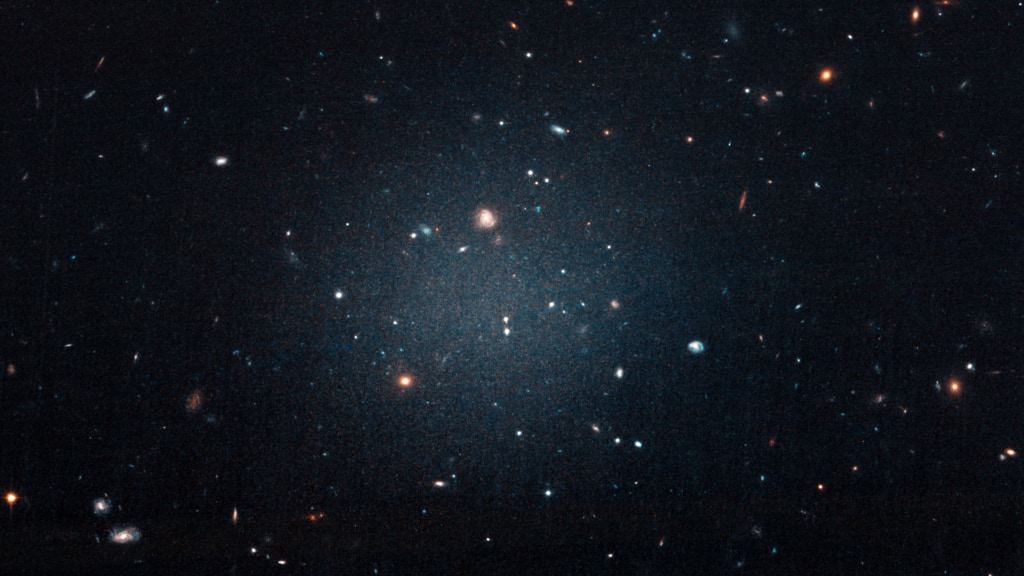The Bubble Nebula

The universe is full of strange and surprising things.
In 2016, NASA’s Hubble Space Telescope captured a stunning image of perhaps one of the most intriguing objects in our Milky Way galaxy: a massive star trapped inside a bubble. Object NGC 7635, better known as the Bubble Nebula, is located about 7,100 light-years away in the Cassiopeia constellation. Its star burns a million times brighter than our sun and produces powerful gaseous outflows called stellar winds that howl at more than four million miles per hour. Over time, the winds have pushed nearby gas and dust outward, forming a layer around the star that’s denser in some areas than others. Based on the rate the star is expending energy, scientists estimate in 10 to 20 million years it will explode as a supernova. And the bubble will succumb to a common fate: It’ll pop. Explore the videos and images to learn more.
The Bubble Nebula is located 7,100 light-years away. This video zooms to its location in our Milky Way galaxy.
Scientists estimate the nebula formed over 4 million years. This animation provides a look at its three-dimensional structure.

The bright magenta spot in the center of this image is a star called BD+602522. The nebula's gas and dust are shaped by its fierce stellar winds.

Although the star is blowing gas and dust outward in all directions, the nebula is actually growing off-center.

A ground telescope at Kitt Peak National Observatory in the United States captured this image of the Bubble Nebula.
Credits
Please give credit for this item to:
NASA's Goddard Space Flight Center
Video courtesy of NASA/ESA/Viz 3D Team/STScI/F. Summers, G. Bacon, Z. Levay, L. Frattare and University of Alaska Anchorage/T. Rector, WIYN/H. Schweiker, NOAO/AURA/NSF, NASA/ESA/STScI/AURA/The Hubble Heritage Team
Hubble images courtesy of NASA/ESA/STScI/AURA/The Hubble Heritage Team
Ground telescope image courtesy of NOAO/T. Rector
-
Writer
- Alison Takemura (USRA)
-
Scientist
- Travis A. Rector (University of Alaska Anchorage)
Release date
This page was originally published on Thursday, June 2, 2016.
This page was last updated on Wednesday, May 3, 2023 at 1:48 PM EDT.
